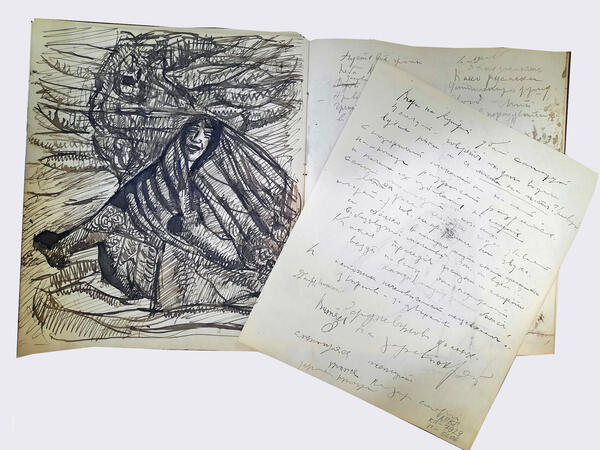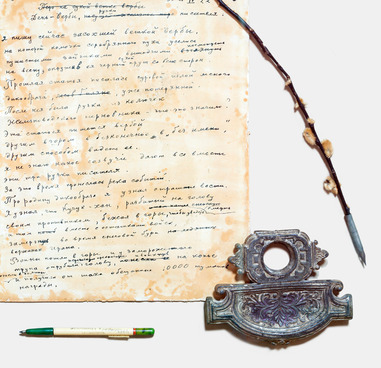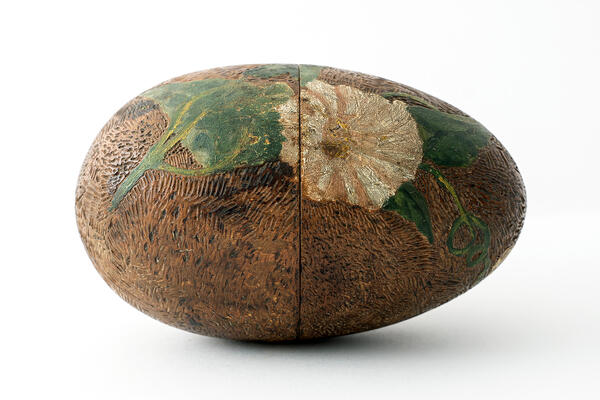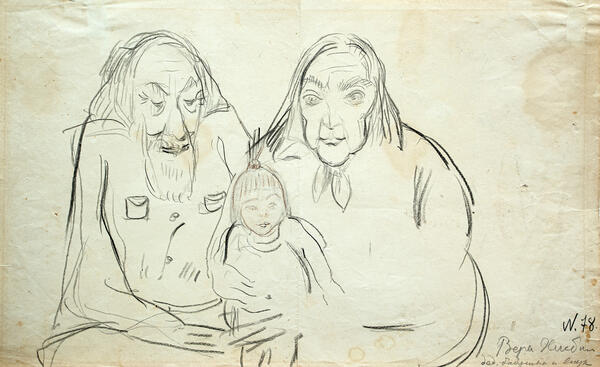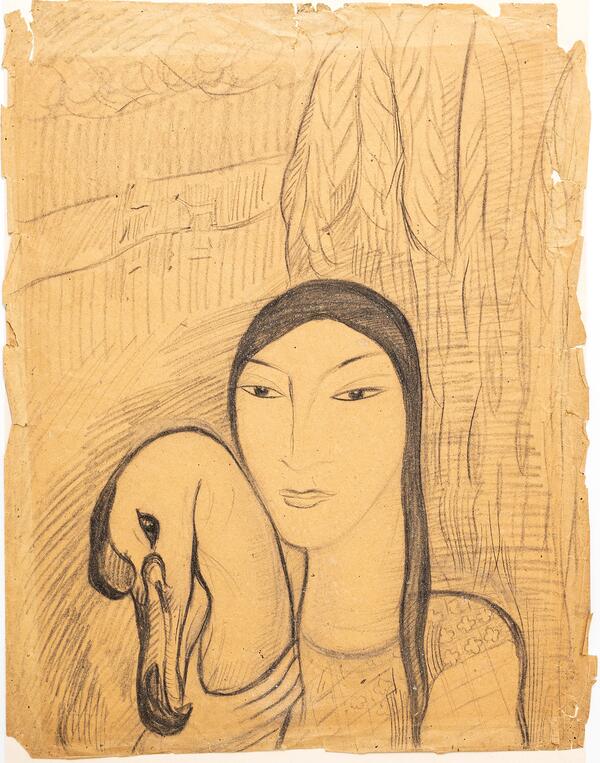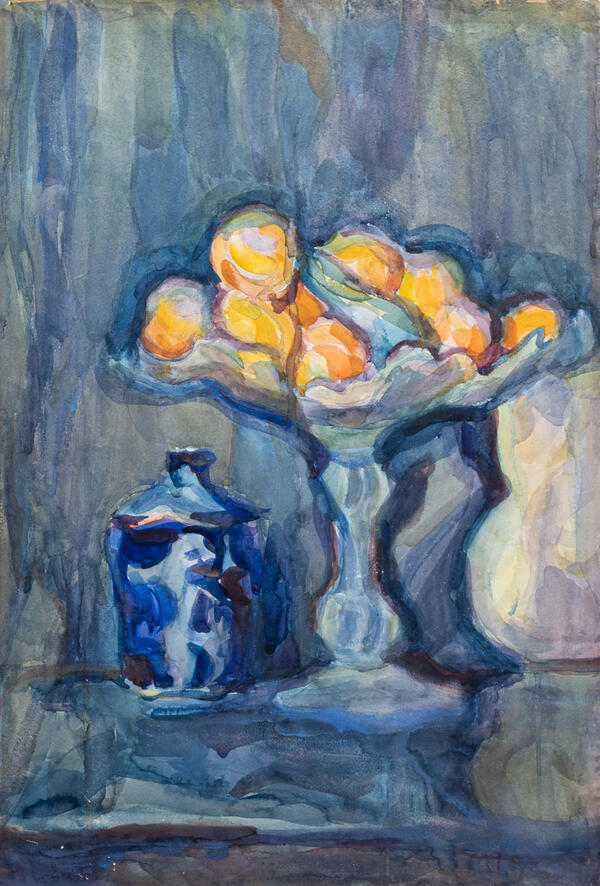Vera Khlebnikova, the younger sister of the poet Velimir Khlebnikov, is known as an artist and prose writer. Her husband, the artist Pyotr Vasilyevich Miturich, was the first to systematize her artistic and literary legacy — the result of her active life and career that lasted about three and a half decades.
During the Russian Civil War, Vera Khlebnikova secretly kept a diary under the simple title “Astrakhan Notebook, I”.
After studying in St. Petersburg under Professor Yan Tsionglinsky, Vera continued her education in Paris and later in Florence. She returned to Astrakhan in August 1916, on the eve of two revolutions and the “deadly swell of civil war”. By that time, both her brothers, Viktor and Alexander (Boris died earlier), were drafted, one as a private, the second as an ensign. Her eldest sister Ekaterina, a dentist, lived with her parents. She and her father, who was already a pensioner but still worked, were the breadwinners of the family; her mother took care of the family.
The “hungry service to painting”, which Vera Vladimirovna encountered back in Italy, continued in her native land. Having settled in, Vera got a job as a cartoonist in the newspaper “Communist”, where she was supported by the poets Iyeronim Konstantinovich Labunsky, Anushavan Grigoryevich Ter-Gevondyan and the director of “Communist” Vasily Ivanovich Topolev.
From 1917, the revolution became a key theme in Vera Khlebnikova’s letters and works — but nowhere does the author speak with delight about either the February or October events. The “Local Chronicle” of those years expressed hope: “The mood in the city remains expectant. The general opinion is that most likely Astrakhan will not drink the bitter cup of Bolshevism.” However, the struggle for political power in the city was won not by the Cossacks, but by the Bolsheviks, which led to the establishment of a rigid dictatorship, mass shootings, famine, and the eradication of dissidents.
Vera Vladimirovna had a premonition of impending changes when many still refused to believe in them, but out of caution she carefully erased dangerous lines and tore out entire pages of the diary. Graphic sketches were also featured in the notebook. They diligently avoided the topic of war.
The drawing “Astrakhan Notebook, I” depicts a fallen royal crown, and next to it is a container with plants and the inscription “Revolution”. “Kerensky, Kornilov, Kaledin, Lunacharsky, Lenin, ” the artist lists the “fruits” grown on the Tree of Revolution.
“Astrakhan Notebook, I” became a kind of artistic document of the time of troubles during the Civil War.
